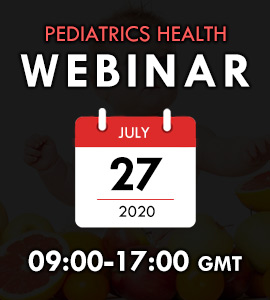
Sandeep Jhajra
Postgraduate Institute of Medical Sciences, India
Title: Linear growth and neurobehavioural outcome in preterm neonates (<34 weeks) at 37 weeks and 40 weeks of corrected gestational age: A prospective observational study
Biography
Biography: Sandeep Jhajra
Abstract
Background: American Academy of Pediatrics (AAP) recommends that preterm should achieve rates of growth similar to those of the fetus in utero at the equivalent gestational age but this guideline has been mostly applied to weight gain. Linear growth represents lean body mass & protein accretion and reflects fat free mass (FFM) accretion. Linear growth closely indexes organ growth and development especially of the brain. Length can be used for predicting neurodevelopmental status of a growing preterm neonate.
Objective: To study the association of linear growth on neurobehavioural outcome in preterm neonates at 37 weeks and 40 weeks of corrected gestational age (CGA).
Design/Methods: This was a prospective observational study conducted from January 2015 to December 2016. All neonates with gestational age <34 weeks at birth who were haemodynamically stable at 48 hour of life were included and followed till 40 weeks of life. Standardized Z-scores were calculated for the length using reference data which included Fenton curves at birth, hospital discharge, 37 weeks and 40 weeks of CGA. They were assessed by Neurobehavioral Assessment of Preterm Infants (NAPI) score at 37 and 40 weeks of CGA.Results: Eighty neonates were included and divided in two groups depending on extrauterine length increase. Group 1(18 neonates) with extrauterine length increase ≥1cm/week had mean gestational age and birth weight of 32.22±0.94 weeks and 1542.78+214.87 grams respectively whereas mean gestational age and birth weight in group 2(62 neonates) with extrauterine length increase <1cm/week were 31.81±1.5 weeks and 1435.52 +278.54grams respectively. After controlling for gestational age , weight Z scores and head circumference Z scores NAPI-MDV (motor development vigor) at 37 weeks and NAPI-AO(alertness orientation) at 40 weeks were positively related to length Z score at 37 weeks (p=0.04) and length Z scores at 40 weeks (p=0.035) respectively.
Conclusion(s): Growth should no longer be defined as weight gain only as extrauterine stunting has negative impact on neurodevelopment of preterm neonate.

